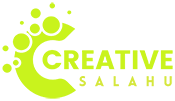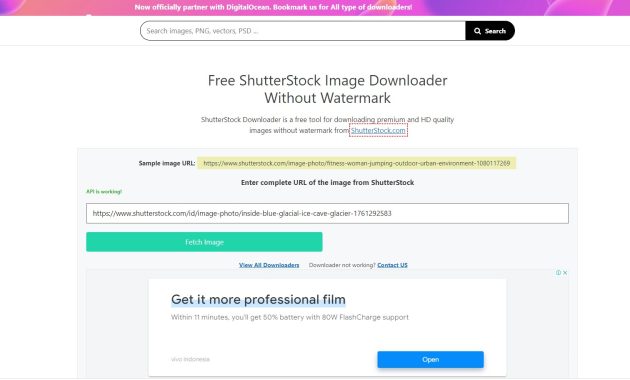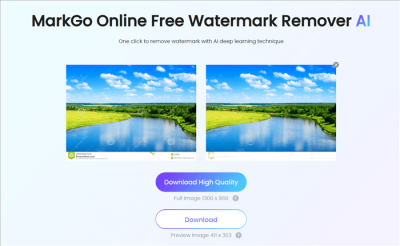Looking to spice up your projects with stunning images but don’t want to break the bank? Shutterstock is a popular platform known for its vast library of high-quality photos, vectors, and illustrations. While it’s a fantastic resource, most images come with a price tag, which can add up quickly. Luckily, there are ways to access Shutterstock images for free, whether for personal projects, small businesses, or just for practice. In this guide, we’ll explore how you can find and download
Understanding Shutterstock Licensing and Usage Rights
Before diving into downloading images, it’s crucial to understand Shutterstock‘s licensing options and what they mean for you. Shutterstock offers two main types of licenses:
- Standard License: This license covers most common uses like websites, social media, presentations, and printed materials up to a certain print run. It generally allows you to use the image for commercial purposes but has restrictions on how many copies you can produce and how you can modify the image.
- Enhanced License: If you need to use images for products for resale, large-scale advertising, or other high-volume commercial applications, an enhanced license is necessary. It provides broader rights and fewer restrictions.
Now, here’s the important part: most images on Shutterstock require a license purchase to be used legally. However, there are legitimate ways to access free images, either through Shutterstock’s own free offerings or through other channels that comply with licensing rules.
Using images without proper licensing can lead to legal issues, including fines or takedown notices. Always check the license details carefully before downloading and using an image. Some free image sources may offer images that look similar to Shutterstock’s but are legally free to use, so be cautious about relying solely on unofficial or shady sources.
In summary, understanding licensing is essential to avoid copyright infringement. Whether you’re using free images or paid Shutterstock content, make sure you’re clear on what’s allowed and what’s not. This way, you can confidently enhance your projects without risking legal trouble.
3. Legal Considerations When Downloading Free Shutterstock Images
Before you jump into grabbing those stunning Shutterstock images for free, it’s really important to understand the legal landscape. While it might seem straightforward—just find an image and download it—there are some rules you need to keep in mind to stay on the right side of copyright law.
First off, even if an image is labeled as “free,” it doesn’t automatically mean you can use it however you want. Many images on Shutterstock are protected by copyright, and using them without proper permission can lead to legal trouble, including fines or other penalties. Always check the licensing terms attached to the image. Some images are free for personal use but require a license for commercial projects.
It’s also crucial to understand the difference between royalty-free and rights-managed images:
- Royalty-free images can be used multiple times for various projects after a one-time fee or sometimes even for free, depending on the source. But make sure you adhere to the license restrictions.
- Rights-managed images are more restrictive. They’re licensed for specific uses, durations, and regions, so using them outside the agreed terms can be a violation of copyright.
Another thing to watch out for is the model and property releases. If an image features recognizable people or private property, you might need additional permissions to use the image for commercial purposes. Using such images without proper releases could infringe on individual privacy rights.
Finally, avoid downloading images from unofficial sources or shady websites claiming to offer free Shutterstock images. These often violate copyright laws and can pose security risks like malware or phishing attempts. Always stick to trusted sources, even when searching for free images, to ensure you’re complying with the law and protecting your devices.
4. Methods to Access Free Shutterstock Images Legally
So, how can you get your hands on Shutterstock images without crossing legal boundaries? Luckily, there are several legitimate ways to access free images from Shutterstock, or at least images that are legally free to use. Let’s explore some of the best methods:
1. Shutterstock Free Trial
One of the easiest ways to access a handful of free Shutterstock images is through their free trial. Shutterstock often offers new users a trial period (usually 1 month) during which you can download a limited number of images for free. Just sign up for an account, and you’ll be able to download high-quality images without paying initially.
Remember to cancel before the trial ends if you don’t want to be billed, and always review the licensing terms associated with the images you download during the trial.
2. Shutterstock Free Image Collection
Shutterstock maintains a dedicated section for free images that are available for download and use under specific licenses. These images are often contributed by photographers and are meant to showcase their work, offering you legal access to high-quality visuals at no cost.
To find these, simply navigate to their Free Image Collection page. Each image will have clear licensing information, so you can be sure you’re using it legally.
3. Creative Commons and Public Domain Resources
Besides Shutterstock, you can also find free images through platforms offering Creative Commons (CC) licensed photos or images in the public domain. Some popular sites include:
- Unsplash: Offers a vast library of free, high-resolution images you can use for any purpose.
- Pexels: Provides free stock photos and videos with flexible licensing.
- Pixabay: Features a wide range of images, illustrations, and videos that are free to use.
Always double-check the licensing terms, but most images on these platforms are safe to use for both personal and commercial projects without attribution.
4. Participating in Contests and Promotions
Sometimes, Shutterstock or related photography communities run contests, giveaways, or promotional campaigns where you can win free downloads or subscriptions. Keep an eye on their official pages and social media channels for announcements. While this isn’t a consistent method, it’s an excellent way to access free content legally and support talented photographers.
5. Contacting Photographers Directly
If you find an image on Shutterstock that you love, consider reaching out directly to the photographer for permission to use their work for free. Many artists are willing to share their images for free if you give proper credit or if your project aligns with their interests. Always get permission in writing to avoid any future legal issues.
In summary, accessing free Shutterstock images legally is all about knowing where to look and understanding licensing rules. By using free trials, Shutterstock’s own free collections, reputable free image sites, and direct permissions, you can ensure your projects stay compliant and respectful of artists’ rights. Happy downloading!
5. Top Resources and Websites for Free Stock Images Similar to Shutterstock
Looking for high-quality images without breaking the bank? Luckily, there are plenty of websites out there that offer stunning stock photos for free—perfect substitutes or complements to Shutterstock. Whether you’re working on a personal blog, a small business project, or just need some eye-catching visuals, these sites have got you covered.
Here are some of the top resources you should check out:
- Pexels: Known for its vast library of free, high-resolution photos, Pexels offers images that are perfect for blogs, social media, and design projects. All photos are licensed under Creative Commons Zero (CC0), meaning you can use them without attribution.
- Unsplash: Unsplash has become a go-to for beautiful, artistic photography. With thousands of free images contributed by talented photographers worldwide, you’re sure to find something that fits your vibe.
- Pixabay: Beyond photos, Pixabay offers illustrations, vectors, and videos—all free to download and use. The site’s easy-to-navigate interface makes finding the perfect image a breeze.
- Freepik: While Freepik provides free vectors and illustrations, it also has a solid collection of stock photos. Be sure to check the licensing requirements for each image, as some may require attribution.
- Burst by Shopify: Designed with entrepreneurs and small business owners in mind, Burst offers free images that are especially useful for marketing, branding, and e-commerce.
These sites are fantastic resources because they offer images that are not only free but also diverse and high-quality. Remember to always double-check the licensing details to ensure your use complies with the copyright terms, especially if you’re planning to use the images commercially.
6. Tips for Finding High-Quality Free Shutterstock Images
If you’re trying to hunt down the best free images that resemble Shutterstock’s high standards, here are some handy tips to help you succeed:
- Use Specific Keywords: Instead of vague terms like “nature” or “business,” try to be more descriptive. For example, “sunset over mountain lake” or “modern office workspace.” The more specific your keywords, the better your chances of finding exactly what you need.
- Leverage Advanced Search Filters: Many free stock sites have filters for orientation (landscape, portrait), color, size, and even image type. Use these to narrow down your options and save time.
- Focus on Resolution and Quality: Always check the resolution of an image before downloading. High-resolution images (at least 1920px wide) look more professional and are versatile for different projects.
- Read Licensing Details Carefully: Even on free sites, some images might have restrictions. Look for images labeled with Creative Commons Zero (CC0) license, which allows for free use without attribution.
- Explore Curated Collections and Editor’s Picks: Many sites feature curated collections or editor’s picks that highlight the best and most popular images. These are often high-quality and trending visuals perfect for your needs.
- Mix and Match Resources: Don’t rely on just one site. Combining images from multiple sources increases your chances of finding unique and high-quality visuals that make your content stand out.
- Use Image Editing Tools: Sometimes, a little cropping, color correction, or overlay can transform a good image into a perfect one for your project. Free tools like Canva or GIMP are excellent for this purpose.
Remember, patience and a bit of experimentation go a long way. Don’t settle for the first image you find—keep searching with different keywords and filters until you find that perfect shot that elevates your content to the next level.
7. How to Properly Credit Free Shutterstock Images
Using free images from Shutterstock is a fantastic way to elevate your projects without breaking the bank. But, even when images are offered for free, it’s important to give proper credit to respect the creators and stay compliant with licensing terms.
So, how do you properly credit free Shutterstock images? Here are some simple guidelines to follow:
- Check the licensing details: Always review the specific license attached to the free image. Shutterstock often provides clear instructions on how to credit the image or if credit is even necessary. Some free images may require attribution, while others may not.
- Provide clear attribution: If attribution is needed, include the creator’s name and Shutterstock as the source. A typical attribution might look like: “Image by [Photographer’s Name] from Shutterstock”.
- Place credits where appropriate: Credits can be added in captions, footnotes, or a dedicated credits section on your website or project. Make sure they’re visible but not distracting from your main content.
- Use the right format: Here’s a simple example of how to credit an image for a blog post or website:
Image by John Doe from Shutterstockor
Photo by Jane Smith, licensed under Creative Commons (if applicable)
Remember, even if an image is free, giving proper credit helps support photographers and creators, encouraging them to continue producing quality work. When in doubt, check Shutterstock’s licensing info or reach out for clarification. Proper attribution not only keeps your project compliant but also shows respect for the hard work behind every image.
8. Alternatives to Free Shutterstock Images for Your Projects
While Shutterstock offers a treasure trove of images, sometimes you might want to explore other options—whether to find more unique visuals, better licensing terms, or just to diversify your content sources. Luckily, there are plenty of great alternatives to free Shutterstock images that can fit your needs.
Here are some popular options to consider:
1. Unsplash
Unsplash provides high-resolution, royalty-free images contributed by talented photographers worldwide. The best part? Most images can be used freely for commercial and personal projects without attribution, though giving credit is appreciated.
2. Pexels
Pexels offers a vast library of free stock photos and videos. Their content is curated to ensure quality, and usage is very flexible. It’s a perfect resource when you need vibrant, professional images without licensing worries.
3. Pixabay
Pixabay hosts thousands of free images, illustrations, vectors, and videos. Their licensing is straightforward—most content is free for commercial use with no attribution required. It’s a one-stop-shop for diverse media assets.
4. Freepik
While Freepik offers a mix of free and premium resources, their free collection includes vectors, illustrations, and photos. Just remember to check attribution requirements, as some resources need credit to the author.
5. Canva’s Free Media Library
If you’re designing with Canva, their free media library offers a wide range of images, icons, and elements. Many are free, making it easy to create polished visuals without additional costs.
6. Creative Commons Search
Using Creative Commons Search allows you to find images licensed for reuse across multiple platforms. Just be sure to verify the license type and whether attribution is necessary.
In addition to these options, always double-check the licensing terms before using any image, especially for commercial projects. Combining Shutterstock’s free images with these alternatives can give you a richer, more diverse visual toolkit for your projects, all while respecting creators’ rights and ensuring legal compliance.
Conclusion and Best Practices for Using Shutterstock Images
Using Shutterstock images can significantly enhance the visual appeal of your projects, but it’s essential to do so responsibly and legally. Always ensure you have the appropriate rights and licenses before incorporating images into your work. While seeking free images might seem tempting, using unauthorized images can lead to legal consequences and damage your reputation. Instead, consider exploring reputable sources that offer free or discounted images legally, and remember to give proper attribution when required.
Here are some best practices to keep in mind when working with Shutterstock images:
- Always read licensing agreements: Understand the usage rights associated with each image to avoid infringement.
- Use high-resolution images: Ensure images are of sufficient quality for your intended medium, whether digital or print.
- Avoid overusing the same images: Diversify your visuals to maintain originality and engagement.
- Properly attribute images when necessary: Follow attribution guidelines to respect creators’ rights.
- Optimize images for web: Compress images to improve page load times without sacrificing quality.
In summary, responsible use of Shutterstock images involves understanding licensing, respecting copyright laws, and applying best practices in image management. Doing so will ensure your projects remain professional, compliant, and visually compelling.



